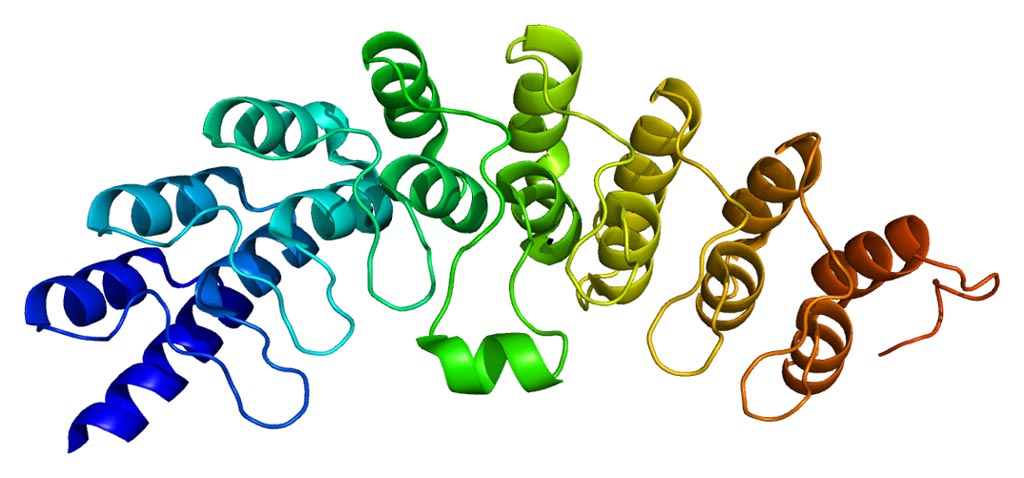Molecule-Based System Rids Cells of Unwanted RNAs
By LabMedica International staff writers
Posted on 12 Jun 2018
Researchers seeking ways to modify gene expression have developed a small-molecule-based tool that can recruit a nuclease to a specific gene transcript, triggering its destruction.Posted on 12 Jun 2018
The balance between synthesis of RNA and its degradation is a key determinant in the life of a cell. Engineered systems such as the CRISPR/Cas9 gene editor have been adapted to rid a cell of RNAs.

Image: The structure of the RNase L enzyme (Photo courtesy of Wikimedia Commons).
In a new approach for manipulating the cellular RNA population, investigators at the Scripps Research Institute (Jupiter, FL, USA) attached a small molecule (Targaprimir-96), which selectively binds the oncogenic microRNA (miR)-96 hairpin precursor, to a short 2′-5′ poly(A) oligonucleotide.
The investigators reported in the May 24, 2018, online edition of the Journal of the American Chemical Society that the conjugated molecule locally activated the endogenous enzyme RNase L (latent ribonuclease), which selectively cleaved the miR-96 precursor in cancer cells in a catalytic and sub-stoichiometric fashion.
Silencing miR-96 activated the pro-apoptotic FOXO1 transcription factor, triggering apoptosis in breast cancer, but not healthy breast, cells. These results demonstrated that small molecules could be programmed to selectively cleave RNA via nuclease recruitment with broad implications for drug development.
“Since it is now known that RNA is a key driver in nearly every disease, optimization of this approach that turns a cell’s natural defenses toward destroying disease-causing RNAs is likely broadly applicable. We will be laser-focused on diseases for which there are no known cure and have a poor prognosis, such as hard-to-treat cancers and incurable human genetic disease,” said senior author Dr. Matthew D. Disney, chemistry team leader at the Scripps Research Institute. “I am excited to see where we and others ultimately take this.”
“These studies, like much science, were about a decade in the making. We are very excited to see how this initial application evolves,” said Dr. Disney. “This research further shows that RNA is indeed a viable target to make medicines. I believe this is just the tip of the iceberg of how this approach will ultimately be applied.”
Related Links:
Scripps Research Institute













